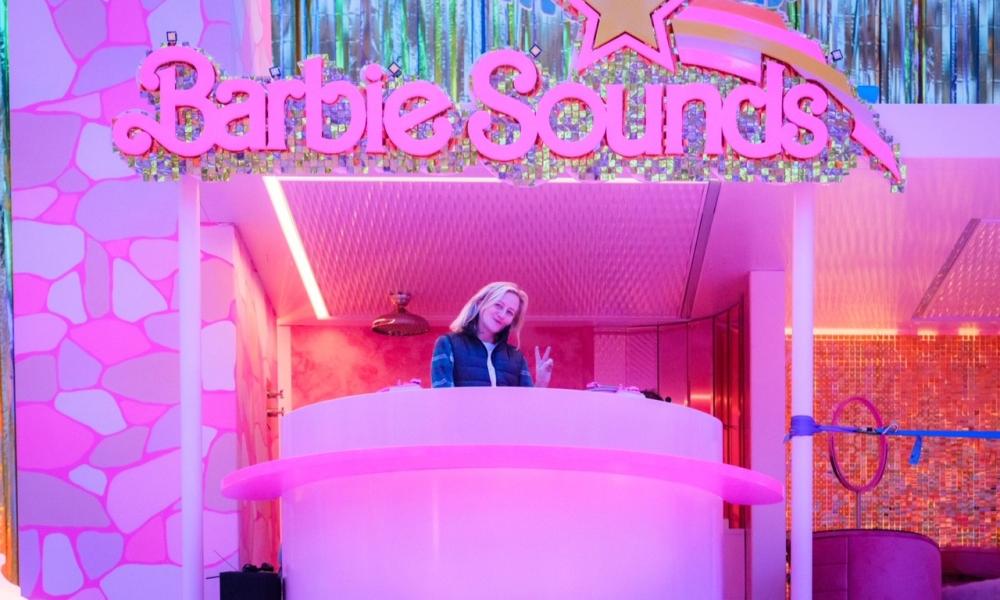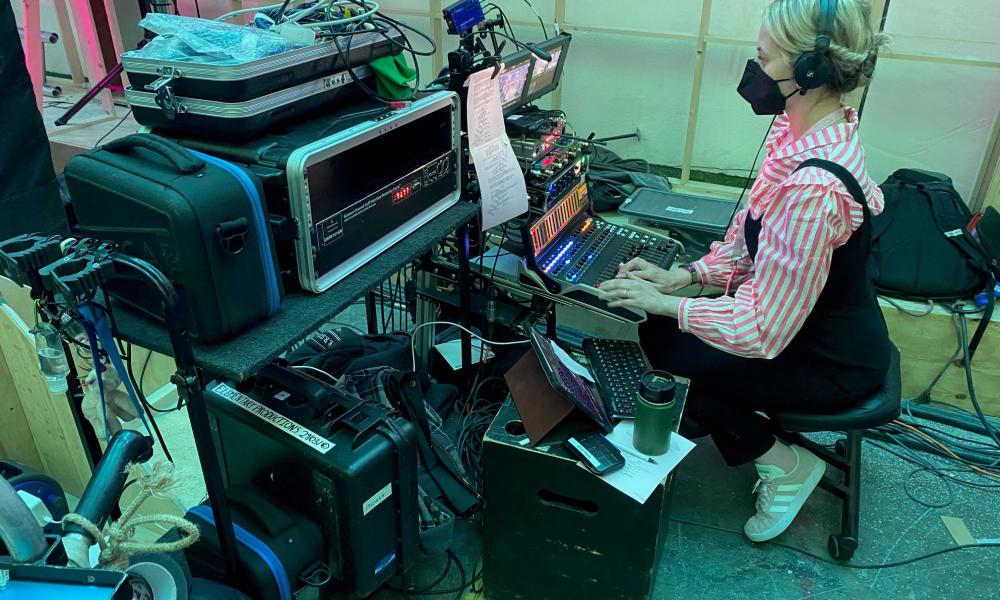This Barbie is a National Film And Television School Graduate!
As Barbie passes $1bn at the worldwide box office we caught up with Production Sound Mixer and National Film and Television School graduate Nina Rice to find out what it was like working behind the scenes on this record breaking production.
Hi Barbie! How did you find yourself working on one of the most anticipated films of the year?
Hi Barbie! I’d been a huge fan of Greta Gerwig's work, first seeing her performance in Frances Ha and then through her own films Ladybird and Little Women. When I found out she was about to make a Barbie film, with a script written by herself and Noah Baumbach, I called my agent to see if there was any way I could get an interview for the film, knowing this was a long shot as it would be a huge step up in my career to get this opportunity.
Fortunately, the producers liked my CV and I was called in for an interview with Greta. We immediately hit it off and she explained her vision for the film and what she expected from her production mixer. I was blown away by her ideas for the film and explained to her what I could offer the production. I also felt both being mothers working in the film industry we were able to connect on a personal level.
The interview must have gone as well as I thought it had and by the end of the day, I was offered the job. There was a lot of pressure on me to step up to mixing such a large studio feature, but I felt I was able to rise to the occasion, mostly due to the fact I surrounded myself with an incredibly talented sound crew.
Many people aren’t aware of the sound roles in film and TV - could you describe your role?
I’m a production sound mixer which means I am responsible for recording the necessary audio during a shoot day.
My job could be looked at in two stages, the prep and the shoot. During the prep, or pre-production, I breakdown the script and note what elements of sound are required for each scene. I also scout the locations where we will be filming to ensure they will be suitable for recording usable sound or if production need to reconsider certain locations due to planes or building sites etc.
Another important part of my prep is communicating with the other departments, as a sound team we will be interacting with others to ensure the shoot starts off smoothly. This includes working out the time code system with the camera, testing audio signals with the video department and touching base with the costume department to make sure we aren’t surprised with any difficult or noisy costumes that might comprise our radio mics. I also supply all the sound equipment for the shoot, so I make sure I have the right gear needed for each day of the shoot.
I’ve found making the extra effort during the pre-production period can really make a huge difference to how we perform as a sound team.
When the shoot arrives, I work with a team of two boom operators, a second Assistant Sound and a trainee. My team work on the floor of the set, using a combination of expertly placed boom mics and radio mics which I mix and record at my sound trolley. I always work with full collaboration with my team but as head of the department I have the final say on all the key decisions.
What were the challenges and highlights?
As with all films one of our main concerns was dealing with various difficult to mic costumes that our cast members were wearing. Luckily my very talented 2nd Assistant Sound Laura Clough was able to come up with inventive ways to solve these problems, for example for the sequence where Ryan Gosling’s Ken is topless except for a large open fur coat. With some forward planning Laura negotiated with the costume department to sew his transmitters into the lining on both the left and right of his coat, with the microphone threaded into the fur on the outside. This allowed us to capture a wonderful open sounding dialogue while he was wearing this potentially troublesome costume.
The Director of Photography also had to use powerful lights called soft suns to light the perpetually sunny Barbie Land set. These very particular lights have loud fans on them to prevent overheating, so the floor team would, when possible, request to turn any lights off when they were not in use to ensure the fan noise wasn’t picked up too much on the boom microphones.
Greta also likes to have actors sometimes overlap their dialogue to create fast pacing in her scenes, so I had to make her aware of when this could potentially cause an issue during the edit. Luckily, she is a very understanding director and a wonderful collaborator so she was happy to have my input.
How did your NFTS training prepare you for the role?
My time at the NFTS remains one of the most special periods of my life. It was 2 years of intense film making and collaboration, having the opportunity to work with so many talented people on so many diverse projects was essential in shaping me to be the mixer I am today.
Using the training and knowledge I gained at the school helped me secure my first jobs and gave me the confidence to progress to the highest level of the industry. Without the core lessons I learned at the school I don’t think I would have made it so far and I’m forever grateful for my time there.
What advice would you give to anyone looking to follow in your footsteps?
I think the basis for my current work ethic comes from being a dedicated and determined assistant during my first 10 years in the industry. I always felt very lucky to even be involved in this line of work, so I always gave 110% working on any project I was involved in at any level. My advice would be to never forget how privileged you are to be working in this industry and always keep your standards high.
Be unafraid to push your limits and take any opportunities to progress in your career. I was lucky enough to have my mentor Chris Ashworth encourage me to start moving away from assisting and mixing more. I could have worked as an assistant for several more years had he not seen my potential and given me the confidence to get behind the desk, I’ll be forever grateful to him.
Nina is repped by RA Agency representing leading female talent for camera and sound in film and television - ra-agency.online
-
Find your way to your own Barbie Land and apply today for life-changing sound training at The National Film and Television School!
Location Sound Recording for Film and Television
15 months | Full-time | Scholarships Available
This 15-month Postgraduate Diploma - the only one of its kind in the UK - has been developed in response to industry demand for suitably trained production sound professionals. Throughout the course you will gain practical experience on fiction and documentary films and in multi-camera television, graduating with a number of credits.
Last few places available
Apply today: nfts.co.uk/location-sound-recording-film-and-television
Find out more about our ScreenSkills scholarship for this course: nfts.co.uk/article/nfts-location-sound-diploma-empowers-aspiring-sound-recordists-join-screen-industry



